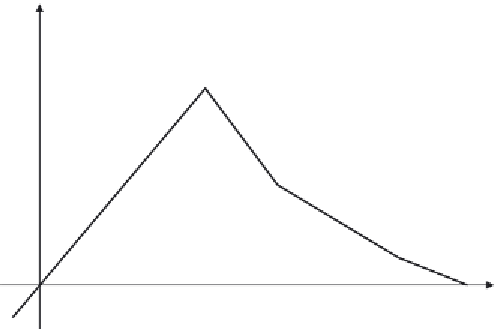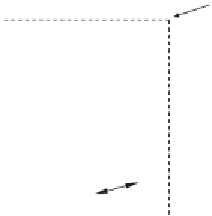Civil Engineering Reference
In-Depth Information
stored for subsequent calculations. Subsequent cracking at the same point is
restricted to being orthogonal to this direction since stress components asso-
ciated with an open crack are not included in the definition of the failure
surface used for detecting the additional cracks. Cracks are irrecoverable:
they remain for the rest of the calculation (but may open and close). No
more than three cracks can occur at any point (two in a plane-stress case
and one in a uniaxial stress case). Following crack detection, the crack affects
the calculations because a damaged elasticity model is used. Concrete
smeared cracking model is a smeared crack model in the sense that it does
not track individual “macrocracks.” Constitutive calculations are performed
independently at each integration point of the finite element model.
The presence of cracks enters into these calculations by the way in which
the cracks affect the stress and material stiffness associated with the integra-
tion point.
The postfailure behavior for direct straining across cracks is modeled
with tension stiffening, which allows modelers to define the strain-softening
behavior for cracked concrete; see
Figure 5.22
. This behavior also allows for
the effects of the reinforcement interaction with concrete to be simulated in
a simple manner. Tension stiffening is required in the concrete smeared
cracking model. Modelers can specify tension stiffening by means of a post-
failure stress-strain relation or by applying a fracture energy cracking crite-
rion; see
Figure 5.23
. Specification of strain-softening behavior in reinforced
concrete generally means specifying the postfailure stress as a function
of strain across the crack. In cases with little or no reinforcement, this
Stress,
s
Failure point
1
σ
Tension stiffening curve
σ
u
Strain,
e
ε
u
=
1
1
E
Figure 5.22 Tension-stiffening model as given in ABAQUS [1.29].












Search WWH ::

Custom Search